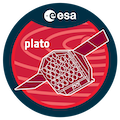Speaker
Description
High resolution spectroscopy will play a key role in the ground based follow-up of PLATO targets. On the one hand, radial velocities will be fundamental for the measurement of planet masses, with ~10 cm/s precision needed to detect Earth analogs. On the other hand, transmission spectroscopy measurements will allow to characterise their atmospheres. These objectives remain, however, severely challenged by astrophysical signals from the host stars (often dubbed as "noise"), whose oscillations, granulation, and magnetic activity distort the observed spectra. In this talk I will quickly review the problem behind "stellar noise" and discuss the most widely used methods to deal with it, as well as their limitations. I will then present PoET (the Paranal Solar Espresso Telescope) and its science case. Expected to start observations in 2025, PoET will connect to the "planet hunter" ESPRESSO spectrograph (ESO-VLT) and provide both disk resolved and disk integrated ("sun-as-a-star") observations of the Sun. This unique dataset will be obtained in the ultra-high resolution mode (R>200 000) and cover the full optical domain (380-780 nm) in one single shot. Using the Sun as a proxy for other solar-type stars, PoET data will allow to map our star and understand in unprecedented detail the contribution of each solar feature to spectral variability that affect the detection and characterisation of exoplanets. In turn, this will inform about the best approaches to tackle this problem. The learned lessons will provide valuable information for the analysis of PLATO follow-up data for other solar-type stars. PoET spectra will further allow to tackle other problems in solar and stellar physics that are of relevance to PLATO, including the detailed stellar characterisation in the presence of stellar activity.

